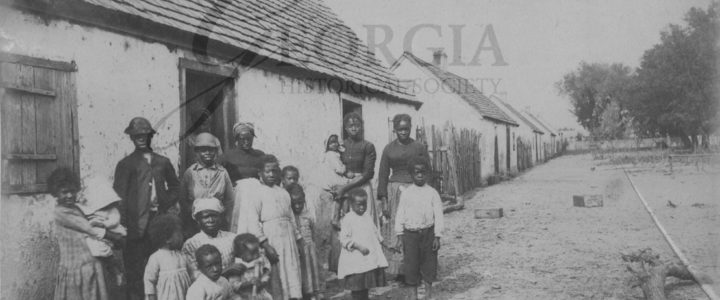This decade or so following the Civil War was an unprecedented time in political history, bringing black southerners, many of whom were enslaved only years earlier, to local, state, and national offices. Moreover, the technological innovations of the 19th century allow students to see photographs commemorating progress, such as black politicians, as well as mementos, such as the Confederate Seal below, glorifying the Old South of antebellum and the Confederacy. The primary sources below will bring Reconstruction alive and demonstrate the importance of the years immediately following the Civil War.
Click here for a teacher guide to this primary source set.
Set 07: Political, Social, and Economic Changes in Georgia During the New South Era
The primary sources of the New South include many references to agriculture and the growth of the cotton industry in Georgia. This agricultural resurgence was one of the defining factors of Georgia’s New South, and GHS provides resources, such as the Atlanta Cotton States Exposition to demonstrate the gravity of this moment. Moreover, this set includes many opposing viewpoints on race, lynching, and the state of Georgia following Reconstruction. These views also shed light on the future of Georgia in the New South, a period of technological and agricultural growth.
Click here for the teacher guide for this primary source set
Set 04: Westward Expansion in Georgia Between 1789 and 1840
Georgia’s early years as a state were marked by expansion and growth. Georgia’s population grew after the Revolutionary period and the white population looked west for more elbow room. New technologies like the cotton gin and steam-powered rail led to expansion and growth of Georgia’s economy. It was in this period that cotton became king of the South, Georgia being no exception. Several defining historic events occurred during this period including, the Yazoo land frauds, the founding of the University of Georgia, the discovery of gold in North Georgia, the spread of Baptist and Methodist churches, the creation of a Cherokee syllabary, and the Trail of Tears.
Click here to view and download a teacher guide for this primary source set.
Set 02: Colonial Period of Georgia’s History
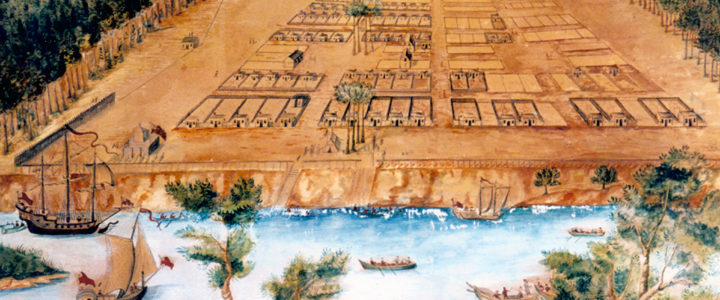
In 1732, the British crown granted the Georgia Trustees a charter to establish the colony of Georgia in the debated territory between British Carolina and Spanish Florida. The colony was governed by a board of men called the Georgia Trustees from 1732-1752. In 1752, the Georgia Trustees gave over control of the colony to the British government and Georgia became a Royal colony. By this time, the original philanthropic goals of the Trustees had given way under the weight of harsh conditions in the Colony, and the colonists had fallen into line with South Carolina’s economic plan with production of rice, lumber, naval stores and indigo. This type of agriculture was supported by the lifting of the ban on slavery in the colony of Georgia in 1750 and the easing of land policies.
Click here to view and download a teacher guide for this primary source set.
View of Savannah in 1734
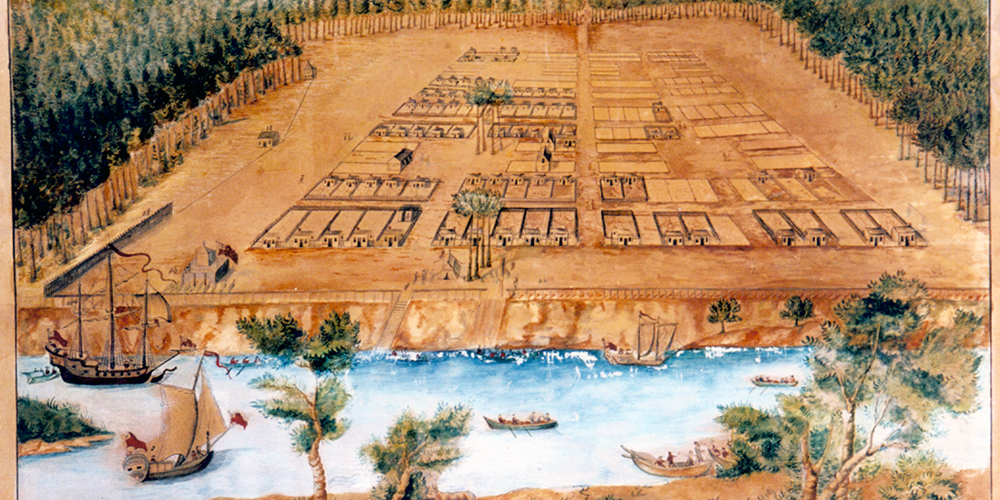
Peter Gordon’s 1734 “View of Savannah” provides a visual representation of the early settlement on the banks of the Savannah River. Peter Gordon, one of the colonies original settlers presented it to the Trustees in London as a descriptive map. This image is a watercolor on paper of the original Peter Gordon sketch. The map shows Oglethorpe’s unique design for the city. The plan was based on a system of town wards, each containing building lots, trust lots, and a central square.

Letters of Gov. James Wright, 1774-1789

The letters between Governor Wright and the Secretaries of State for America between 1774 and February 1789 detail the goings on of the Georgia colony from the perspective of its Royal Governor. The letters written leading up to and during the American Revolution are particularly interesting for understanding the tensions between the British government and revolutionaries.
Set 01: Impact of European Exploration and Settlement in Georgia
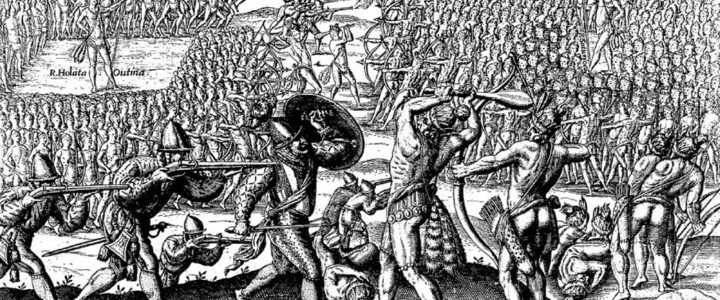
Georgia’s human history begins thousands of years before February 12, 1733, when James Oglethorpe arrived with the first settlers on the banks of the Savannah River. The available sources from this period present a challenge for students of Georgia’s history. How do we study societies without written languages? What can we learn about early Spanish activity in Georgia when there are no remains and few records left behind? What can we trust from early accounts of European explorers? Historians have faced these challenges by integrating archeological research with a careful examination and scrutiny of the written material existing from Georgia’s earliest human history.
Click here to view and download a teacher guide for this primary source set.
United States Constitution Draft Annotated by Abraham Baldwin
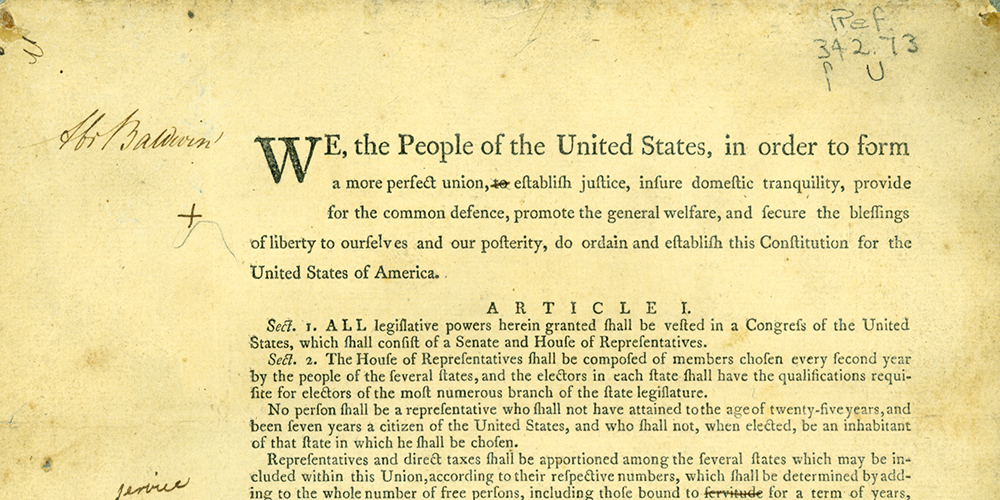
Abraham Baldwin was one of four delegates to attend the constitutional convention of 1787, and one of only two men from Georgia to sign the Constitution. Baldwin’s decision to change his vote on the issue of equal representation of states in the senate was instrumental in guaranteeing the “Great Compromise. Abraham Baldwin’s draft copy of the United States Constitution is one of the Georgia Historical Society’s most valuable treasures.
United States Constitution draft annotated by Abraham Baldwin, 1787. MS 1703. Georgia Historical Society.
Download a PDF transcript of the annotations.
View a description of the item in the GHS Archival Collections Finding Aids Database.
View the final version of the United States Constitution from the National Archives.
Recollections of a Georgia Loyalist, 1836
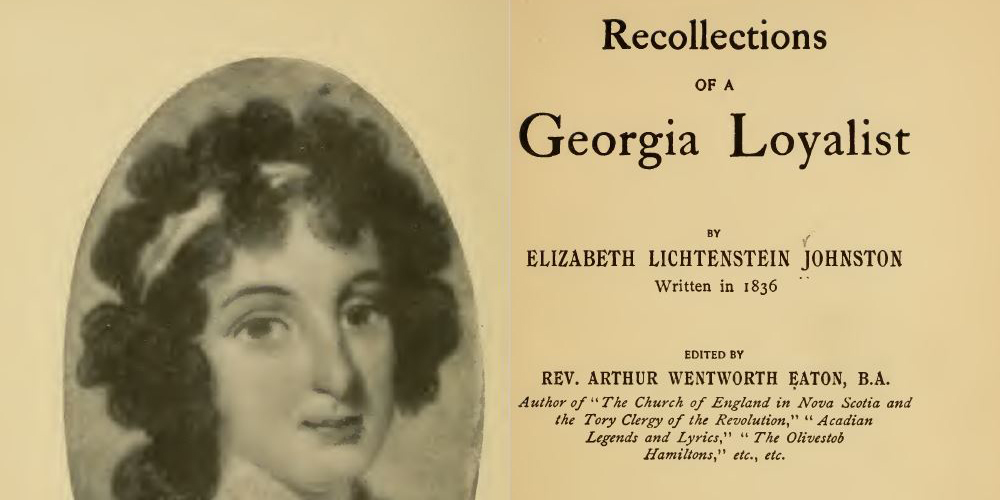
Elizabeth Lichtenstein Johnston’s book Recollections of a Georgia Loyalist also offers a female perspective on the American Revolution in Georgia. Similar to Abigail Minis, Elizabeth Johnston also hailed from Savannah, Georgia. Unlike Abigail Minis, Johnston was a loyalist. When British forces evacuated Savannah in 1782, Johnston’s family left never to return. After fleeing Savannah, Johnston’s family lived in South Carolina, Florida, Scotland, Jamaica and finally Nova Scotia. With the help of her grandson, Elizabeth Johnston wrote down her memories of Georgia during the Revolution at the age of 72.
Johnston, Elizabeth Lichtenstein. Recollections of a Georgia Loyalist. Edited by Arthur Wentworth Eaton. London: De La More Press, 1836.
View the item on the Internet Archive.
Statement of the Georgia Loyalist and Names of Banished Persons
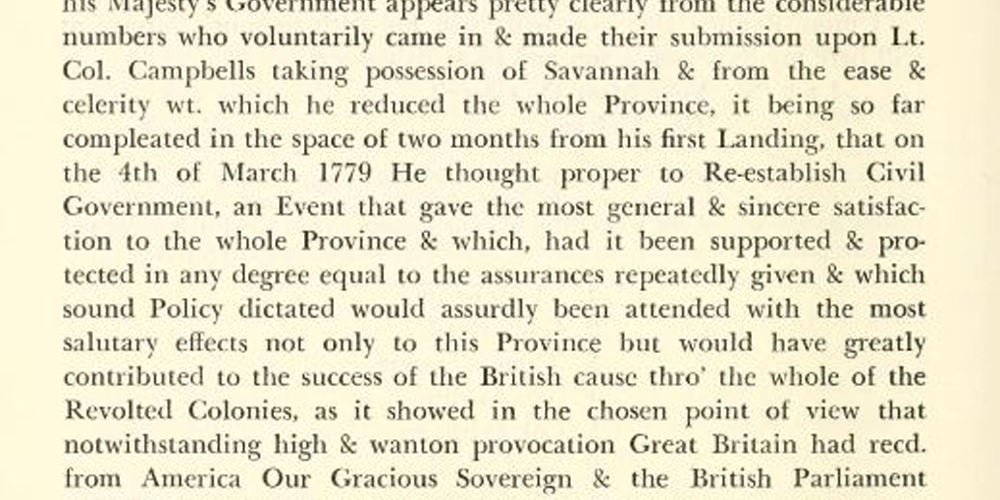
On May 4, 1782, the Georgia legislature passed the Confiscation and Banishment Act. This act declared 277 loyalists guilty of treason and allowed for the confiscation of their property. Loyalists who left the state had their property seized. The statement of Georgia loyalists and accompanying list of persons whose property was confiscated was transcribed and published from a handwritten document in the GHS collection. The transcription can be found starting on page 17 of Collections of the Georgia Historical Society, Volume XX: Selected Eighteenth Century Manuscripts.
Loyalist Papers, MS 506. Published in Collections of the Georgia Historical Society, Volume XX: Selected Eighteenth Century Manuscripts.
View a description of the item in the GHS Archival Collections Finding Aids Database.

